Michal Stawicki's Blog, page 18
July 4, 2017
My Internet Business Insights
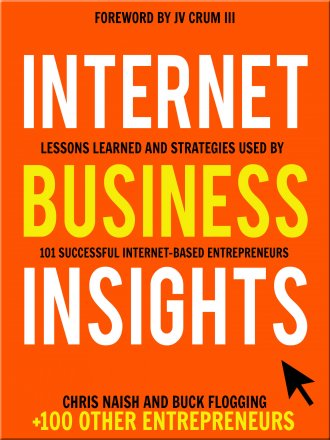 A couple of fellow authors have recently published the great book titled “Internet Business Insights.” They included 100 distinct perspectives of successful online entrepreneurs.
A couple of fellow authors have recently published the great book titled “Internet Business Insights.” They included 100 distinct perspectives of successful online entrepreneurs.
My friends ask them the same set of questions, very helpful for aspiring digital entrepreneurs:
How did you come up with the idea for your business?
What was your first major breakthrough?
How long did it take you to reach 100% digital freedom?
What was your biggest mistake?
What is the single most effective tactic you discovered?
What advice would you give someone wanting to achieve similar success?
For the last few years, I have been publishing my income reports, trying to demonstrate what it takes to become an author in the Internet era and how you can make a living from that.
Below are my answers and at the end of this post, I shared how you can get 100 more of such stories for free:
How did you come up with the idea for your business?
It was quite a bumpy ride. First, I discovered I wanted to become a writer. I had no idea what it really meant to be one, but I knew I wanted to write and that I needed to make money out of that. I had enough of my IT career and the corporate world. I also realized that working for someone else is not a way to achieve financial independence.
I dabbled with this and that for several months – I started a few blogs, wrote a couple of short fiction stories in my native language, but these all were dead ends.
About half a year after I had decided to be a writer (and I hadn’t earned a dime during that period), my friend remarked how interesting my post about creating a personal mission statement was, and that I should write an eBook about this.
I researched a bit and decided to publish on Amazon, which seemed both relatively easy and doable without many resources. I found a free Kindle publishing course and got basics from there (e.g. how to set up a Kindle publishing account), then after extensive research, I bought Steve Scott’s book and used it as a blueprint for publishing my first book.
It took me 46 days from writing the first word of my book till hitting the “publish” button. I started from a free promo, and my book was downloaded over 400 times. I was stoked! People were willing to read what I had written!
Then the sales started to trickle in, and I was hooked. People not only wanted to read what I wrote, they were willing to pay for that!
I earned the first money out of my day job and for something that I loved to do.
I wrote “A Personal Mission Statement: Your Road Map to Happiness” from my experience. I had already been involved in the massive personal development program of my own design, and I concluded that sharing my experience would be easy for me. I didn’t err much in that regard.
What was your first major breakthrough?
At the end of January 2013, eight months after publishing my first book, my fifth book “Master Your Time in 10 Minutes a Day” became an Amazon bestseller.
A mix of many factors led to that effect. One of my new friends that I met in a Facebook authors group made better covers for all of my books, including “Master Your Time,” so I finally had decent covers.
Another man I met in that community offered me a joint venture. He edited my book and helped me with marketing.
At that time I had already made some connections with other bloggers and authors. At the moment of the book launch, I released a few guest posts, and I leveraged some resources to get the free promo going.
But the biggest factor was that my mentor, Steve Scott, advertised my book to several thousands of his subscribers.
My book got about 4,000 downloads in a few days and sold hundreds of copies in the following month.
In January, I earned 2% of my salary. In February 2013, I earned over half of my day job salary.
It was like a dream come true.
How long did it take you to reach 100% digital freedom?
I’m still not at the point of 100% digital freedom. My business provides enough income to quit my day job, but we would have had to downsize our lifestyle and my CEO (read: wife) is not ready for that.
However, after four years of doing “my thing,” we decided (read: she decided) that this side hustle income was enough to quit her job. My wife gave a notice last month (literally two weeks ago).
What was your biggest mistake?
My biggest mistake has been impatience. I said “has been” because it still negatively impacts my decisions.
In the last few years I observed from the first row how my friends built their authorpreneurship to the level that allowed them to support their families full time. I saw how Steve Scott built his business from 4-figures to 5-figures a month.
I compared myself to them, and I got frustrated. Out of that frustration, many evil things were born.
I was disappointed with my results despite the fact they were much better than MY past performance. When I released my 6th book, it was nothing like a success of “Master Your Time,” but it did better than any of my first four books. “From Shy to Hi” is still one of my best performing titles. It sold well over 1,000 copies and, for the past several months, it has been consistently selling about 100 copies a month.
But I was so disappointed after its launch!
When my book sales didn’t match my past performance or achievements of my peers, frustration got the worst of me. I vented to my friends, subscribers, and other authors. No one likes grumblers. I surely lost some respect in their eyes.
My frustration affected my productivity. Too many times I succumbed to the line of the least resistance. I slowed down when I could double down. It only added to the volatility of my business income and to the frustration.
Life and business is a long-term game. Only after three years, I started to reap the fruits of my hard labor. If I had put my nose steadily to the grindstone, it would has probably taken me less time.
What is the single most effective tactic you discovered?
In self-publishing, the most effective tactic is to nurture your own email list. The only method remotely as effective is leveraging someone else’s email list. But if you can do that, it means this “someone else” invested in the #1 tactic first and built their list.
You can tap into your email list’s potential in so many ways that it’s mind blowing. It’s irreplaceable at the moment of a book launch. It’s priceless in the process of getting feedback about my projects in progress. I always consult my readers about my covers and titles ideas, and I always invite them to beta-read my manuscripts.
Surveying my list spared me involvement into projects where there was no demand. I beta-tested some ideas and ditched them after investing a dozen, not hundreds, of hours into them.
When you have an email list, it’s also easier to be invited into some joint ventures.
And, most importantly, my email list is MY resource. It’s independent of Amazon’s or any other big player’s whims.
What advice would you give someone wanting to achieve similar success?
“A similar success” in my case means a nice side income out of the side hustle. I don’t dedicate more than 20 hours a week to my business and often barely more than 10. This side income is volatile and jumps from 15% to 194% of my salary.
Having that in mind, I have three pieces of advice for you:
1. Prepare yourself for the marathon.
You cannot get a full-time income from a part-time activity. Well, not very quickly. But if you keep going, keep hustling and keep networking, unexpected opportunities will arise. Last month I made a deal with an author, and I run his Amazon advertising campaigns. My commission isn’t very impressive, but I dedicate very little time to running his campaigns because I did my homework while running my campaigns. What is more, this model is easily repeatable. I can take 20 or 100 more clients like that. Maybe this business will be my final sprint to the digital freedom, who knows?
You cannot predict where you will be even in two years. A year ago I barely knew what Amazon advertising was about. Ten months ago I created my first ad campaign. Today I can potentially generate thousands of dollars a month using the skillset I developed.
When I started in May 2013, my only source of online income were Kindle sales from Amazon. Nowadays, I have several streams of income – Kindle sales, audiobook sales both from Amazon and iTunes, paperback sales, digital sales from stores other than Amazon, two different packages of coaching, translations, and affiliate sales. All those resources were built with time.
But I was SO frustrated along the way! A year ago my book sales dwindled to the lowest level since November 2013.
Online business is a marathon. You never know how you will monetize your experience in the future.
Keep hustling regardless of the current results. Your future results may be so much bigger.
2. Find a mentor.
In fact, you can have multiple mentors nowadays. You can follow online a very deliberately-picked pack of people and learn from them in different areas of your life and business.
When it comes to self-publishing, the biggest impact on my business came from Steve Scott. I learned the basics from him, and I shadowed him relentlessly. Within several months, I was able to create a lively relationship with him. We exchanged favors and, at a later stage, learned from each other.
However, he was not a perfect model for me. Steve can work full time on his business, I had a full-time job and a long commute. He had a hefty head start compared to me. He already had been a successful online entrepreneur before he became an author. He knew infinitely more about traffic, email marketing, leads, conversion of leads and all of this “magical” stuff.
Thus, I learned from others at the same time.
3. Network, network, network.
All the breakthrough I’ve ever had came from networking.
“You cannot succeed by yourself. It’s hard to find a rich hermit.” — Jim Rohn
Thanks to connecting with others, I got my first proofreader who edited my books #1–4 for free.
One author helped me with my terrible covers. One guy helped me with releasing my first bestseller. I cannot even count all the times other authors helped me with promoting my books.
Being featured on Steve Scott’s email list has always been a great way to catapult my books’ ranks.
I worked out relationships that allowed me to get discounts for some services.
My history with Buck Books allows me to be featured on their site practically every time I articulate such a wish; there is no entry barrier for me.
It’s just the top of an iceberg. I have more such stories. Network, it brings results.
Internet Business Insights
That was my shot at answering those awesome questions.
“Internet Business Insights” is full of insights and advice from other authors, bloggers, podcasters, YouTubers, coaches, freelancers, and many other kinds of online entrepreneurs.
In the book there is a section that compiles the 30 repeating themes that were mentioned again and again by multiple experts.
You can verily use this book to shortcut your success as internet entrepreneur by learning from the best.
Completely FREE
It’s an outstanding resource (over 502 pages in paperback!).
I’m elated to be able to offer the book to you completely free.
To get it for free in an eBook form, simply sign up HERE.
You’ll be notified when the book is free on Kindle (the closest date is 9th of July and about once a month after this date).
Enjoy it, and feel free to ask me any questions about my insights in the comments below…
June 28, 2017
A Turning Point: Forty Second Income Report – September 2016 (-$223.94)
Are you curious about a one-year delay? I explained it in my first income report.
 September 2016 was a milestone in my writing career. Not the one you’re probably thinking about – I didn’t get a contract with a big publisher or publish a blockbuster. Quite to the contrary, and it served me well.
September 2016 was a milestone in my writing career. Not the one you’re probably thinking about – I didn’t get a contract with a big publisher or publish a blockbuster. Quite to the contrary, and it served me well.
I published Directed by Purpose on Thursday, the 8th of September. Thanks to the preparations in August, the first week of September wasn’t insane; it was merely busy.
My friend who designed a cover delivered it a few days before the publication date, and I made one last-minute change, I got rid of the subtitle altogether to make a title and the main image bigger.
I hit the publish button on the 8th, but it was a silent launch only. The initial Buck Books promo was scheduled for Monday, the 12th of September. I took a day off on Thursday and wrote a few email broadcasts and an email template for my beta readers and potential reviewers. I posted info about the launch of the book here and there on social media and sent several emails, mainly to the people who promised to review the book in advance.
And the next day I went for a 3-day get-together organized by my employer.
It was in a remote area, and I had Wi-Fi connection only at a hotel. I enjoyed the trip and activities.
Monday Morning
I woke up before 4 am and sent a couple of broadcasts. I also sent a few reminders to potential reviewers.
Then I could only wait for the results.
Amazon Ads
On the first of September, I signed up half a dozen of my books into KDP Select program and created the first advertising campaign for The Art of Persistence. It is still up and running.
I created several more campaigns in September; a pair for The Art of Persistence and Trickle Down Mindset and one campaign per other book in the Select program.
I was stoked with the results. My dead books resurrected. The books that were selling a few to several copies a month started selling 1–2 copies a day.
Moreover, I quickly discovered that advertising had a significant impact on my print book sales.
Paperback Sales
On the 1st of September I was stoked to discover that Amazon bought 35 print copies of my personal mission statement book. That rescued the bottom line of the otherwise worst month of my book sales since January 2014.
Till that point in time, I was lucky to sell a 2-digit number of paperback copies a month. My best month was February 2015 when I sold 32 copies. The meager figures of CreateSpace royalties in my previous income reports reflect that reality quite aptly.
However, in September 2016, I sold 55 copies of my paperbacks.
69% of them came from the books included in the KDP Select program and advertised on Amazon.
September 2016 was the last month of a 2-digit sales number of my paperbacks. Since October 2016, they were always 3-digit.
InstaFreebie Feature
While I had been submitting my books to the Select program, I received an email from InstaFreebie. They asked if I was interested in featuring Making Business Connections That Count on their platform.
This was serendipity. I still could reverse submission to Select. I definitely was interested in getting featured.
The feature was the same week as the book launch. It added some additional workload. I created a page on my blog and encouraged my readers and followers to share it.
I also adjusted the giveaway, making the sign-up to my list obligatory.
In the end, it was well worth it. I got over 250 new subscribers. My email list grew by 50% in a couple of months thanks to the InstaFreebie platform.
I decided to stick with them, even though their fee ($20) wasn’t worth the small trickle of subscribers I got outside promotions. Those promotions made up for that with vengeance.
InstaFreebie required the giveaway to be available for one more week, so I closed it on 15th of September and signed the book up into KDP Select program the next day.
Analytics
Very quickly I recognized the fact that Amazon reporting in the case of ads was created without authors in mind. In other words, it was hopeless. It’s good to know how much you spent, but absolutely not useful in guessing how much you earned.
After several days of trying to squeeze an ounce of sense from Amazon reporting, I created my own Google sheet and a habit of updating that sheet every morning with data.
Maybe that didn’t make me much money, but it surely protected me from flushing money down the toilet.
I think it was more of paying daily attention to my campaigns than anything else that caused them to be profitable in 95% of cases.
Also, thanks to the Amazon ads, I re-discovered the importance of editorial reviews.
Making Business Connections… was advertised two weeks later than the other books. I noticed a strange data fluke. This book had more or less the same amount of clicks per impressions, but much less actual purchases. It meant that people were clicking on the ad, landing on the book’s page, and then they moved on without buying.
I wondered: How is this book’s page different than my other books?
I quickly noticed the difference – there were no editorial reviews on the page! I mined the reviews that I got from my readers and featured a few of them in the ‘Editorial Reviews’ section in Author Central.
The numbers improved to the levels observed with my other books.
Email marketing
InstaFreebie is integrated only with MailChimp, and I wasn’t familiar with this platform. But I got about 500 new subscribers, so I had to learn on the go.
September was a month rich with email interactions with my list. I sent several broadcasts to everybody and several dedicated to specific segments, like my beta readers who promised me a review of Directed by Purpose, or a welcome broadcast to new people who got on the list from InstaFreebie.
Wayne, my mastermind buddy, mentioned that he feels I’m doing my readers a disservice by not offering them some higher-tier product, like a coaching program based on my book.
So I went into a hustle mode again. However, I was smart about it – I started from surveying my subscribers, if they were interested in such a program. I created a survey, wrote a broadcast, and sent it at the end of September.
Apart from several broadcasts, I sent also a few dozen individual replies to my readers.
My son continued working for me as my assistant, and I recorded a few videos explaining what I require from him.
Our cooperation wasn’t rocky nor smooth. He didn’t share my enthusiasm for spreading my message and, like a proper teenager, had been lazy with his tasks.
On the other hand, he could do things for me no virtual assistant could have done. I shared with him my passwords and accounts with no risk whatsoever.
New Versions
I managed to publish two paperbacks in September, one for Directed by Purpose, and it was only a couple weeks after the launch, and one for Know Yourself Like Your Success Depends on It. The last one was almost a year after the publication of an eBook version. I finally did that because I also decided to make an audiobook version of it.
Of course, this meant hours spent on adjusting the manuscripts, formatting, creating the Table of Contents, email correspondence with HappySelfPublishing who created the paperback covers for me, signing a contract with a narrator, and so on.
It was a very good decision, especially with Amazon ads positively affecting my print sales.
Important Decision and Announcement
On 22nd September, I sent an email to my list informing them about my decision to hold any new releases of mine for an unspecified period of time.
Here is the core of it:
I started my writer’s journey hoping that I will support my family from my writing. Three years down the road and it didn’t materialize. My hopes were even higher when I published a few bestsellers. But their fate was always the same: an initial surge of sales and quiet oblivion after a few months. Kindle publishing was, for me, like pumping a hand water-pump; as soon as I stopped pumping and took a break in publishing a next book, the sales dwindled. I have no more energy to pump. I put all my publishing projects on hold. Writing is for me a joy, but publishing is a taxing work.
I had enough. I was spent. Writing books for a living is a full-time job, at least at the beginning, when you try to make enough income to sustain your current lifestyle.
Part-time efforts can bring only part-time (or worse) results. Till the moment of sending the broadcast, I sold exactly 134 copies of Directed by Purpose, my latest title. After three years of publishing, I could predict the future. This book was no blockbuster. It would not have brought me freedom from my day job.
I was hustling for four years. At the end of August I received June’s royalties, only €311. I had already had figures for the next two months. They weren’t any better.
For the last few months, I had been drawing from my day job salary to pay my business expenses. I was working hard for relatively small results.
The worst part was that I felt a growing distance among my family. It was my fault as well. I didn’t dedicate enough time to keep our relationships thriving. I was overwhelmed with work.
I didn’t intend to give up, but I desperately needed to limit my workload. Eliminating the publishing process was the obvious choice. Five rounds of editions and corrections were taxing like nothing else. I didn’t like this activity, it drained me. And the results didn’t justify my time investment.
I was touched by the response of my readers. There were a few voices of disappointment, but everyone declared their support of my decision to spend more time with my family.
The new chapter of my author career began. I had no idea how much better it would be.
The Income Report Breakdown
Income:
Amazon royalties: €196.95 ($220.58)
CreateSpace royalties: €116.24 ($130.19)
Draft2Digital royalties: $21.67
Coach.me fees: $48.73
Audiobooks royalties: $4.32
Total: $425.49
Costs:
$36.9, View From the Top Community fee
$29, Aweber fee
$265, Business on Purpose mastermind
$15.15, royalties split with co-author
$198.38, Amazon ads
$40, RA’s (RA = Real Assistant; my son 
June 19, 2017
One Habit that Made a Big Difference in My Health and Life
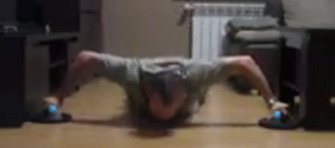 I’ve just done 57 pushups. On my left arm.
I’ve just done 57 pushups. On my left arm.
Meh, I hoped to beat my record of 63 pushups on the left arm.
As mundane and unsurprising as it is when talking about health and habits, the most significant habit that made a difference in my health and life is exercising.
In 2006 I returned to my habit of doing a consecutive series of pushups every morning.
I missed a day here and there, usually because of sickness or sometimes because I was rushing to work. But I doubt I missed more than several days a month in the first few years, and later my consistency improved. I’m sure (because I started to keep track) that I didn’t miss a day of my morning workout in the last 3.5 years.
How did it change my life?
Exercising Is a Keystone Habit.
It means a habit that spontaneously breeds more good habits. Brian Tracy explained it neatly:
“Keystone habits are habits that have a multiplier or a domino effect in your life.”
When it comes to keystone habits, there is a lot of noise, but very, very few proven instances of them. One of the very few that were identified by scientists was regular physical activity, aka exercises.
Exercises breed new habits. How exactly it happens is irrelevant. It’s true and it works.
I remember the first habit I picked along with my morning workout. I wanted to pray more consistently, but I very often forgot to say my morning prayer. I also struggled a bit to exercise consistently; it was also a case of absent-mindedness rather than ill will. One day I decided to couple my workout with my prayer. I said a few verses of Psalm 63 (“God, you are my God, I pine for you…”).
Bam!
The consistency of both my workout and prayer suddenly skyrocketed.
I had been doing my morning exercises for about 6 years when I seriously decided to lose some weight. I introduced more changes into my lifestyle and diet.
It Taught Me the Power of Consistency.
When I had started my pushups routine, I could do 40 normal pushups. Six years later, when my overweight was at its peak, I could do well over 110.
It happened without an elaborate fitness plan, without a nutrition plan, and without an expert guidance of a personal trainer. Sheer consistency created those results.
I had a grasp of the power of persistence on the downright bodily level.
So, when I read the book “The Slight Edge” in August 2012, I was ready to try its message:
“Success is a few simple disciplines repeated over time.”
When it comes to succeeding, we are our worst enemies. What’s in your head determines actions you take and outputs you receive.
I believed that, to achieve success, you needed this enormous effort and to do grand deeds. I thought you needed an insane amount of willpower, discipline, talent, and — most importantly — luck to succeed.
But Jeff Olson said I need only consistency. Thanks to my exercises, I was able to grasp that concept. My mind opened enough to give it a try.
And, oh boy, when I tried it, I was hooked. Just a pinch of consistency was enough to provide great return on investment. Within one month since starting my speedreading practice, I almost doubled my reading speed. Crazy!
Patience
Because I intimately understood the power of consistency, I gave myself enough time to build new habits and get results.
Speedreading was the most rapid and impressive example, but I noticed more than marginal improvement in every area of my life that I put into “perseverance test.” Seven months after reading the book, I achieved my dream weight. I lost 15% of my body weight.
My belief in the legitimacy of The Slight Edge philosophy solidified thanks to those experiences. I kept doing the things in which I could not observe any results justifying the effort. I kept going with ventures I considered absolutely impossible to succeed.
I’m Glad I Did
One of my biggest mental blocks was lack of belief that I can improve our financial situation. I was a lifelong employee, a scion of a lifelong employee, and starting anything on my own was as impossible in my mind as flying to the moon by flapping my hands.
However, I discovered a desire to be a writer. That was preposterous! I had no experience, no skills, no authority and no audience.
Yet, I started to write. Within half a year, I was writing five days a week. After eight months, I published my first, very short, non-fiction book. I published three more books and wrote the fourth one in the next several months.
My effort was absolutely not justified by my results. In January 2014, I earned 2% of my day job’s salary, and that was my record month. I sold a whopping 197 copies of my books.
But. I. Still. Kept. Going.
Writing was the fun part. Bearing my wife’s scolding about “hopeless wannabes” wasn’t. Hard work that is involved in publishing (a few iterations of edition, keywords, categories, books descriptions, coordinating a cover design, and a zillion other activities that self-publishing includes) wasn’t fun.
I persevered only because I had this experience of my exercises saying that persistence brings results.
My fifth book became an Amazon bestseller. I earned half of my salary from royalties in one month.
The later course of events wasn’t a happy end. The ride was really wild, up and down, again and again.
I kept writing and since September 2016, my income from books and coaching exceeded my salary.
Health
Exercises alone are not enough to make you healthy. But this is a good start.
I introduced plenty of new healthy habits when I decided to lose weight and then when I decided to pursue success in writing. I track my sleep amount. I eat a fruit or vegetable at least once a day. I read all food labels. I drink two glasses of water right after my morning workout.
Proper sleep and diet are even more important for your health than exercises.
I was sick only twice since July 2013.
I cannot recommend enough doing a regular physical activity. It has a life-changing potential.
June 7, 2017
“View from the Top” Book Review
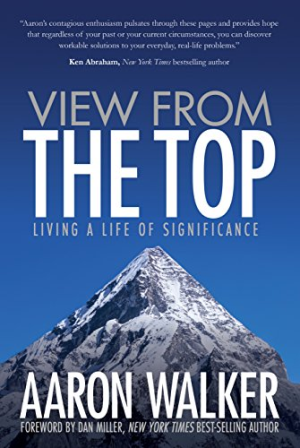 I loved this book, and I wolfed it within a few hours.
I loved this book, and I wolfed it within a few hours.
By the way, one of the things I found very refreshing was that Aaron Walker didn’t beat the word count as most traditionally published authors do. They do that because their publishers demand that. They have to somehow justify their inflated prices, and they do that by publishing thick volumes. Most of the time, it bites them right back in the butt, because readers are bored by long-windedness.
Well, it’s not the case with “View from the Top“ by Aaron Walker. The author didn’t put a single unnecessary story into it. He said what he had to say without elaborate word figures and beating a dead horse.
I loved the book mostly because it was raw and authentic. No beating around the bush. No veiled hints about this or that. When Aaron decided to reveal something about himself or his story, he did it to the fullest. By no means is he an author who can paint the picture with a painstakingly collected set of beautiful words, but his stories were captivating nonetheless. When he told about the accident on a highway or described how he was tempted to shoot the man down, I was right there with him and could feel his emotions.
I found only a couple of minor problems with the book, and both of them were just a matter of my perspective.
I read “View from the Top“ on Kindle, and it wasn’t properly formatted to fit that format. I got an impression that the publisher tried to convey the feeling of the print layout, and it wasn’t a very successful attempt. The image quotes that I’m sure look great on printed pages were disturbing my reading experience.
I held one or three minor doctrinal differences with Aaron Walker, and some things simply didn’t ring right in my ears.
Religious Background
Aaron Walker is a man of faith, and it shines through the pages of “View from the Top.” Readers who are Christians will get the most out of this book.
It doesn’t mean that people of other religions will not benefit from reading it. This book is one man’s life story and life lessons, not a sermon. Yes, you will find the word “Christ” many times, but it’s just who Aaron Walker is. You don’t also expect to read the autobiography of Dalai Lama that avoids the subject of Buddhism altogether, do you?
“View from the Top“ is not a good fit for one “religious category” of people – for fighting atheists. They would be offended by the obvious deep faith of the author, or they would be too busy proving in their minds what an idiot Aaron is to believe in fairytales to actually ponder his message and apply it in their lives.
The Message(s)
And that would be a real shame, because “View from the Top“ contains so many nuggets of wisdom hard-won by the author in decades of business and marriage.
How pervasive honesty and integrity are to success. How masterminds can help you not only in your business, but in your life. How most people succumb to an instant gratification mindset, and how powerful delayed gratification is. Why you should pay more attention to your relationships than to your job or business.
Another reflection here: research done by some university concluded that the only reliable predictor of one’s happiness is one’s relationships. They tried to correlate many different factors with happiness, especially the ones we feel in our guts are connoted to happiness – material status, respect in the society, health, etc. They found only a feeble correlation between any of them and happiness. But in 90% of cases when you have deep nurturing relationships, you are also happy.
Aaron Walker came to the same conclusions through his life experiences, not by conducting research. I appreciate his common sense and wisdom that is grounded in practice, not theory.
A Few Words about the Author
As I began the review, the book is raw and authentic. It is so because its author is raw and authentic as well.
I’ve been following him for some time and heard his interviews on numerous podcasts, but I still discovered pieces of his story I hadn’t known previously.
Aaron has had a rich life, and he generously shares his experience with readers. I think the most valuable lessons are the ones he learned not in some dramatic circumstances, but the ones he gained by living and growing for many years.
Keep communication lines open in your marriage.
Integrity and honesty are crucial to long-term success.
Nobody likes a cocky fellow.
Those are the lessons he discovered, and he lives in accordance with them, which makes him a very impressive man.
Faith
As I said, “View from the Top“ will be the most useful for Christians. Aaron’s faith is like a fabric that keeps together all other lessons of his book. When you put God in first place in your life, everything else will fall into their right places.
It’s hard to open up to a bunch of strangers in the mastermind when you have no faith. It’s hard – without faith – to be 100% integral when you see others using smoke and mirrors and getting by.
It’s hard to find any meaning and significance in your life if you don’t believe in the all-loving God who planned the good life of service for you.
It’s close to impossible to not be self-centered without faith.
And most importantly, with no faith the unexpected turns of life will squeeze you, chew you over, and leave you beaten.
You cannot predict how your life will unfold. But if you trust God, you can steadily move forward, even if you have just enough light to see only a few steps ahead. It’s a much better way of living your life than standing in place and being paralyzed because of the darkness that looms those few steps ahead.
Having God on your side you can live Aaron’s motto:
Fear missing opportunities more than you fear failure.
Great Book
I’m a reader. I read thousands of books including at least 100 that are life stories told from the first perspective.
I had a weird method of separating good books from great ones: if the book moves me to tears, it’s a great one. “View from the Top“ is a great book.
At one point I had to put it down and hold my tears. I’ve stood on a train platform waiting for a train from work to home. It took me a couple minutes to put myself together.
If you let this book’s message pierce your heart, it may change you and change your life. If you are a man, you can do that with the help of Aaron. He shares his contact information at the end, and he is really approachable. I tested that personally.
If you are a woman, you will know where to send your man 
June 2, 2017
Forty First Income Report – August 2016 (-$428.36)
Are you curious about a one-year delay? I explained it in my first income report.
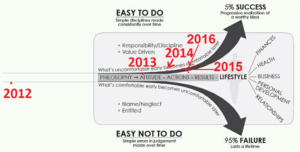 August 2016 was a very busy month for me. Not only had I tackled many additional projects, I also had publishing of the next book on my hands. The amount of activities that come into play with publishing a book causes me a headache on its own. How the heck I tackled half a dozen other tasks puzzles me to no end. But my journals don’t lie
August 2016 was a very busy month for me. Not only had I tackled many additional projects, I also had publishing of the next book on my hands. The amount of activities that come into play with publishing a book causes me a headache on its own. How the heck I tackled half a dozen other tasks puzzles me to no end. But my journals don’t lie 
May 25, 2017
Fortieth Income Report – July 2016 ($317.97)
Are you curious about a one-year delay? I explained it in my first income report.
 I slowed down in July 2016. I recovered a bit after June’s burnout, but the dwindling sales didn’t provide much hope that my writing venture is worth all the additional effort.
I slowed down in July 2016. I recovered a bit after June’s burnout, but the dwindling sales didn’t provide much hope that my writing venture is worth all the additional effort.My kids had vacation. I spent with them more time than usual. We were going to a swimming pool and cinema almost regularly.
Friends and family were visiting us. Being a homeowner has its advantages.
At the beginning of the month we went for a 2-day trip for my wife’s cousin’s wedding.
The fact that in my day job I finally had some quiet period didn’t hurt as well.
Editing
I had to let go of my part-time virtual assistant. In June, I was $400 on the minus side with my business. That wasn’t sustainable. My VA had been doing the main chunk of my proofreading. I needed to go back to Fiverr for proofreading my content.
I started drifting from proofreading all of my content. Going back and forth with documents is tiresome. I began publishing A2A answers on Quora (special on-demand questions asked directly to me) and other really small and quick answers with only the basic spellcheck.
Quality of my answers definitely suffered, but my workload lessened quite a bit.
Projects
I continued my involvement in Aaron Walker’s Community and business coaching.
In the first half of July, I finally managed (after almost a year since eBook publication) to publish a paperback for 99 Perseverance Success Stories.
In an authors group on Facebook, I had heard about the service called InstaFreebie, dedicated for authors to build their email list. My friend recommended the service, so I signed up for a trial period.
In the last week of July 2016, I created a giveaway for my first book, and it was featured on the InstaFreebie blog after a few days.
It took only 2 or 3 days to grow my email list by 58 new subscribers. It was about as many as I got during the prior three months! I immediately started creating more giveaways.
The Income Report Breakdown
Income:
Amazon royalties: €478.82 ($531.05)
CreateSpace royalties: €62.93 ($69.85)
Coach.me fees: $32.03
Audiobooks royalties: $8.33
German translations royalties (for six previous months): $86.27
Total: $727.53
Costs:
$36.9, View From the Top Community fee
$29, Aweber fee
$265, Business on Purpose mastermind
$16.16, royalties split with co-author
$16, proofreading services on Fiverr
$19, webinar with Brian Tracy
$49, WebinarNinja software
$7.5, domain for ExpandBeyondYourself.com
Total: $409.56
Net Result: $317.97
Previous Income Report: June 2016
May 20, 2017
The One Surprising Habit of Successful People
 Oh, they have plenty of common habits: successful people meditate; set daily priorities; exercise; cultivate gratitude; keep a journal; mindfully take care of their relationships; have morning rituals; tackle the biggest tasks first; restrict their time on social media; or allow themselves to check email only twice a day.
Oh, they have plenty of common habits: successful people meditate; set daily priorities; exercise; cultivate gratitude; keep a journal; mindfully take care of their relationships; have morning rituals; tackle the biggest tasks first; restrict their time on social media; or allow themselves to check email only twice a day.
But there is one that stands out and I will focus on this one.
They Sleep
Moreover, they sleep smart.
Yes, there are stories about Edison or Michelangelo and how little sleep they needed. Edison prided himself in that—like every modern corporate rat. But he was probably delusional about his ability to sleep very little because of frequent naps.
Napping
By the way, napping is one smart way to maximize your sleep that successful people often practice.
Winston Churchill, a leader whose country fought the total war, took naps in the middle of the day.
John D. Rockefeller had a sofa in his office, so he could catch a nap in the midst of leading one of the biggest company in USA.
Edison used his frequent naps to sleep on (or generate) some ideas.
A 20-minute nap is better than a cup of coffee. Time management is really energy management. A coffee or other stimulant, usually provides a quick boost of energy and a fast slump afterwards.
A nap can reinvigorate your whole body and mind.
Successful People Sleep Enough
They took pains to have optimal amount of night sleep. Jon Morrow is a successful entrepreneur and at the same time a guy who is completely paralyzed from the neck down. During his interview for EOFire with John Lee Dumas, he said that the habit that contributed most to his success was sleeping eight hours a day—(or rather “a night”).
“Optimal” doesn’t mean “eight.” Sleep needs are individual.
People in natural conditions—living without modern life stress, junk food and without electricity disturbing natural sleep patterns—sleep 6.5–7 hours a night.
3% of the population can thrive on 6 or less hours of sleep. You know what a joker God is, quite often those gifted with little-sleep genes—are gifted with many other gifts as well.
But some folks need over eight hours of sleep which seems like the biggest secret of the universe. You will hear a zillion stories of “bigshots” sleeping 5, 4, or 3 hours (like Donald Trump), but very—very little about people who regularly sleep over 8 hours.
For example Matthew McConaughey sleeps 8.5 hours a night.
(photo credit: By (Flickr), via Wikimedia Commons)
Quite a successful fellow, isn’t he?
Hence, get to know yourself and your sleep needs—better.
They Adjust their Lifestyle to Their Biorhythm
Most people have no special circadian rhythm. They are fine with going to bed at 9:00 p.m. or 1:00 a.m. Others are wired differently.
In the above, I mentioned Churchill. He was a night owl. He slept from 3:00 to 8:00 a.m.
I have a very volatile circadian rhythm. If I push myself to the limit, I almost collapse 4–5 times a day. It’s much better for me to take a 10-minute nap —than to try working on anything. I simply shut down.
Many people are well-adjusted to thrive in the morning. Thus, many successful people choose to wake up early. They dedicate the first few hours of the day to take care of their well-being and face crucial projects. Because they know the importance of sleep, they automatically choose to go to bed early.
Yes, They Know the Importance of Sleep
Instead of priding themselves on how little sleep they need to function, they examine their performance very closely and make sleep their priority.
Most people (those without ‘magical’ genes) after two weeks on 6 hours of sleep—degrade to the performance level of a “Zombie.” To be exact—according to scientists—to the level of a person who hasn’t slept for 48 hours straight.
Here comes the biggest shock. They don’t even realize how poorly they perform. They think they “crush it.” An “Under-Sleeper’s” judgement is deranged. The gradual nature of sleep deprivation causes them not to notice the difference between performance on Day 1 and Day 15.
Some recent research also suggests—that even one night without the optimal amount of sleep, weakens the human immune system.
Sleep enough.
Your chances for success will significantly increase.
April 27, 2017
One Tactic to Deal with Bad and Good Habits
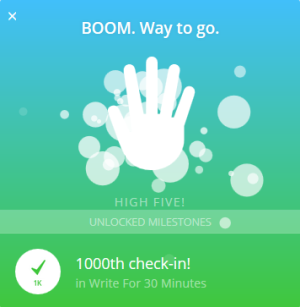 There is one method that works very well in both breaking bad habits and developing good habits.
There is one method that works very well in both breaking bad habits and developing good habits.
That’s a rarity because usually you need a totally different “toolkit” for those two activities.
This is habits tracking.
In its bare minimum, you should simply check every day if you did your new habit—committed “old sins”—or avoided a bad habit. This is very simple, but amazingly effective technique.
In case of good habits: it provides motivation for you. When your chain of consecutive days with your new habit(s) grow, you don’t want to “lose” this investment. Every day you feel more motivated to continue. And the longer you continue, the bigger is your momentum—and the stronger is your habit.
In case of bad habits: tracking provides necessary awareness. We are SO prone to lie to ourselves, especially when it comes to our vices.
You say to yourself: “Oh yea, I cuss a little, it’s not a big deal.”
But when you jot down every single instance an F-Bomb is coming from your mouth, you cannot lie to yourself any longer. You quickly realize how “dirty” your language is when the next bomb arrives and you suddenly find yourself stopping in the middle (“f… …ricking hell!”).
Tracking = Data
Tracking your bad habits also provides you with the whole load of data that is very handy in redesigning habits.
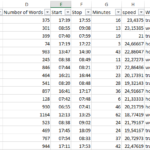 You see, an old habit cannot be eradicated from your brain (without lobotomy—that is). You need to rebuild it. In order to do that, you need to know what triggers it. You need to know its exact routine and the habit’s endpoint.
You see, an old habit cannot be eradicated from your brain (without lobotomy—that is). You need to rebuild it. In order to do that, you need to know what triggers it. You need to know its exact routine and the habit’s endpoint.
The only surefire method of getting rid an old habit is to identify the trigger and replace the routine. For example, when smokers feel and urge to reach for a cigarette—they may reach for a piece of chewing gum instead. Then you repeat—repeat—and repeat your new behavior until it overwrites the old one in your brain.
If you have no idea what I’m talking about, I recommend you educate yourself first. Here is my first blog post in the series of building new habits that explains what a habit loop is and its elements in detail.
New Habits
Developing new habits takes a lot of conscious effort and attention in the initial phase. Depending on the habit, the initial phase may be as long as 200 days. Writing 1,000 words a day has totally different scale than drinking 2 glasses of water first thing in the morning.
And I mean daily habits here. If you want to create a non-daily habit—three times a week, weekly or monthly—the effort and time raises exponentially. In my opinion, especially if you are a newbie in this area, this is too much fuss to bother. Daily or none!
Well, there is an even better path: many times a day. If you train yourself to perform a new habit 5 or 10 times a day, you significantly shorten the period of developing your new discipline.
Tracking helps immensely in focusing your attention in the initial phase. Knowing the science and bests practice in habit development (habit loop construction, data measurement, or the importance of streaks) helps as well.
Apart from that, I have a few tips for you:
1. Take a Tiny Habits course .
It’s free. In a week, you will learn the basics of habits development. What’s more, you will learn via implementation so you should end your week with three new shiny “half-baked” habits.
This course is very light on theory and quite heavy on practice.
And let me repeat—it’s free!
2. Start from habits that provide holistic benefits and are very easy to learn.
 Meditation, journaling, exercises or gratitude journaling are very simple activities that you can start literally from a minute a day and they provide multitude of benefits. They are all correlated by scientists to increase creativity, focus and decrease stress levels.
Meditation, journaling, exercises or gratitude journaling are very simple activities that you can start literally from a minute a day and they provide multitude of benefits. They are all correlated by scientists to increase creativity, focus and decrease stress levels.
Gratitude makes everything better in your life (no exaggeration!). Meditation and journaling help you to get a grip on your self-talk quickly and effectively.
As I said, you don’t need to do them for hours to reap the fruits. It’s enough to meditate for two minutes a day—to have a 90% chance of developing a lasting meditation habit after 11 days! Jotting down three things you are grateful for is a matter of a minute. In 60 seconds, you can exercise to exhaustion with your bodyweight alone—especially if you are out of shape.
3. Develop a keystone habit first.
The common wisdom (and practice!) says that a new entrant of habit development should build one habit at a time.
Leo Babauta:
“(…) too many changes at once. I’ve seen that fail many times. (…) One habit change at a time. Some people can do two (…) and actually stick to it, but that’s much more difficult. Once you get good at that, maybe you can do two at a time.”
I’m not a big fan of this approach, but I will make an exception for keystone habits.
Those habits cause you to spontaneously develop new good habits. They emerge almost on their own without much of your design or conscious effort. If you establish a keystone habit, one day you will wake up and realize that you have more good habits and you barely noticed how they appeared!
Mind you, this path is not a magic nor a silver bullet. It took me several years of doing a series of pushups every morning before my good habits started to spawn like a bunch of rabbits. However, in the long term, it will spare you a lot of struggles.
Good Example of a Keystone Habit: Exercises
One of the very few well-documented keystone habits is regular physical activity (aka exercises).
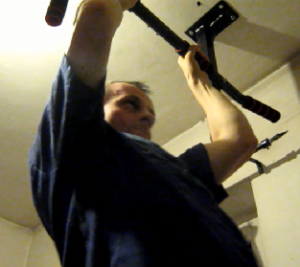 If you don’t have much time, but you are in a fairly good shape, start from just one minute. 60 seconds of pushups or pullups can knock you like a mile of slow jogging.
If you don’t have much time, but you are in a fairly good shape, start from just one minute. 60 seconds of pushups or pullups can knock you like a mile of slow jogging.
If you are out of shape, don’t overdo it. Your activity must be physical and regular. Take a 5-minute walk every evening. With time, you can start to jog—then run—then scale up the intensity.
“You can’t change what you don’t measure.” – Tony Stubblebine
Getting rid of old bad habits or developing new habits definitely introduces a change into your life. Don’t neglect tracking and you can deal with bad and good habits at the same time.
If you need help while developing your habit hire me as your online coach (first three days are free).

April 19, 2017
Thirty Ninth Income Report – June 2016 (-$399.66)
Are you curious about a one-year delay? I explained it in my first income report.
 In my astrology, June 2016 was the month of burnout.
In my astrology, June 2016 was the month of burnout.It always happen to me after a book launch to some degree. My burnouts are more severe if the launch wasn’t good.
This one wasn’t good.
Making Business Connections That Count didn’t make a big splash. The launch itself was almost OK. I had worse. But the book simply didn’t take off afterwards.
It sold only 81 copies in June, and that included a few days the book was still in the Hot New Releases section.
Lesson 1:
Writing this report hit me how I attached emotional load to my sales results. And how it is solely the question of perspective. If I would have sold 400 copies of my first, or second, or third, or fourth book, I would have been so stoked. Especially considering that over 150 of those sales were 70% royalties and my first 4 books were priced at $0.99.
Success or failure is all in the perspective, in your interpretation of results, not in the actual results.
Lesson 2:
Making Business Connections… wasn’t a blockbuster. But it’s an additional book in my catalog. Since the launch, it returned the initial investment, and each additional sale is making me money. It is another eventual contact point for readers who don’t know my works yet.
And that’s the true value of a book for a non-fiction author in any expert/ authority area.
My second book was The Fitness Expert Next Door in which I described, on my example, weight loss best practices available for common folks.
In the first quarter of its life the book sold less than 20 copies. It sold 234 copies during its first 10 months. In the end I made it permafree and it became an attractive entry point for readers who were just checking out my writing.
I made $155 on it during a few-months-long episode with Archangel Ink as my publisher. When I was again on my own in January 2015, I immediately made it permafree again.
But some of my biggest fans found me via this book. They bought more of my books. In fact, I know the cases when they bought ALL of my other books.
I remember distinctly two emails from readers at the beginning of my career thanking me for that book and how it made the difference in their lives. At that time such messages were extremely rare. They provided me with much needed faith that I was doing the right thing.
So, it’s not the amount of money the book will make for you. It’s about the impact you will make with it in people’s lives.
Burnout
But it doesn’t change the fact that I felt overwhelmed, exhausted and disappointed. The sales seemed to dwindle even more rapidly after the launch than before it. My revenues didn’t cover my expenses. So, I enjoyed the nice weather and restricted my business activities to minimum.
I wrote 1,000 words a day, mostly for Quora. I kept in touch with my readers via email. And I hardly did anything more.
As I mentioned, the weather was nice and we enjoyed a few barbecues in our backyard. My wife’s cousin, who lives in a town 10 miles from us, visited us with family once or twice. My wife bought a bike, and we enjoyed bike rides together. The last few days of June were free from school for kids, so I spent with them a bit more time.
A Millionaire Again
In June I crossed one million words in my writing log which I started on 23rd of September 2013.
It took me almost 2 years and 9 months. No one gave me a reward for effort, but it felt nice anyway. I bragged about this in a few Facebook groups, and my fellow authors appreciated my tenacity.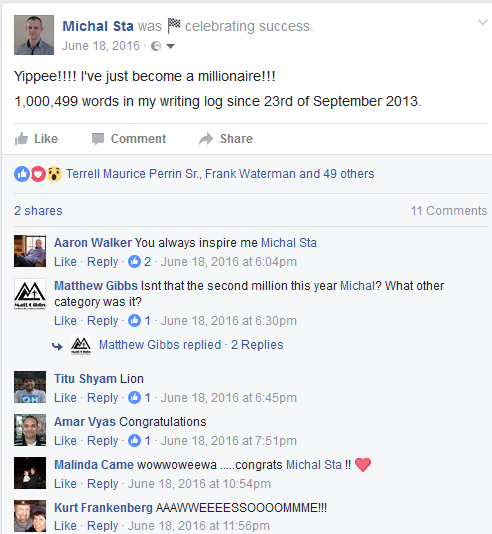
Business Training
My business coach signed me up for his small business training program, and it was the only additional project I tackled in June.
We met every two weeks, and he gave us some assignments to perform. I didn’t feel I needed all of that; the program was aimed for business owners who can afford to hire out some help in their businesses.
On the other hand, it gave some structure to what I was doing. I can recall at least one instance when this knowledge and those exercises worked for my advantage: a few months later, I hired my oldest son to help me out with some mundane everyday tasks, and I used Four Steps to Business Freedom formula to outsource those pieces of work to him. It went pretty smooth.
The Income Report Breakdown
Income:
Amazon royalties: €255.42 ($283.52)
CreateSpace royalties: €33.31 ($39.97)
Draft2Digital royalties: $14.22
Coach.me fees: $37.39
Audiobooks royalties: $2.24
Total: $374.34
Costs:
$30, View From the Top Community fee
$29, Aweber fee
$265, Business on Purpose mastermind
$550, edition of Directed by Purpose by Archangel Ink
Total: $774
Net Result: -$399.66
April 11, 2017
How to Measure Your Personal Progress: My Own Toolkit
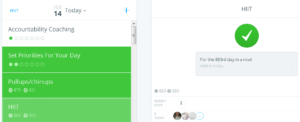 With your personal life, you can be really creative in measuring your progress.
With your personal life, you can be really creative in measuring your progress.
You set your goals. You set your metrics. You set your frequency. You conclude how often you will gauge your progress. You decide on the tools you will use.
Whether you decide to exercise, read, learn, or quit smoking, your goal and strategy should be clear. You don’t just say to yourself, “I sure hope this time I’ll exercise regularly.” You describe your desired end result. You need a plan to achieve it. You translate this plan into a regular schedule, and you keep to that schedule.
Progress Measurement Is a Cornerstone of Achievement.
I just can’t imagine developing a habit without such a tool. Well, maybe being consistent with daily tasks you are passionate about won’t be a big deal. But life has a nasty tendency of getting in your way. You might forget to do your habit today. You might be overwhelmed by a multitude of chores and duties.
Tracking Is Essential for Progress.
It gives you the most important information: did you show up at all? Your tracking will also provide many additional insights to help you excel at your habit. What time? How long? How good? How many times? You won’t know the answers to those questions if you don’t log this information somewhere.
During the past couple of years, I’ve tracked multiple things in my life. I recorded my diet and the things I spent time on. I still record how many words I write every day, the business-related activities I do, and my fitness performance.
Tracking Must be Quick and Easy
And “easy” means easy for you, not for me. If I tell you to track your habit in an app on your mobile device and you don’t even own such a device, just imagine the amount of hassle you’d have to endure to implement my advice. You would have to buy the device, configure it, install the application, and learn how to use it. And that assumes you can afford to buy the device in the first place.
The rule of thumb I always give regarding tracking is that it should be easier than performing your habit. For example, if you are developing a habit of doing pull-ups and you have a bar in your apartment, then just hang the calendar next to the bar or in front of it, so when you do pull-ups, you see the calendar. As soon as you get down from the bar, take a pen and mark the day. It just can’t be easier than that.
This example also contains the second necessary element of tracking—it should be easily incorporated into your routine.
Your Tracking System Should Be Yours
You should own it in your mind. Don’t use an app if it feels awkward to you. You already have to deal with a resistance against your new habit. You don’t need to add more resistance by introducing a tracking system that feels uncomfortable. Listen to my suggestions, but develop methods that will be natural for you.
Of course, some level of uneasiness is necessary. Every new activity you start will feel a bit uncomfortable at the beginning. Often, you just need to survive through this initial period of discomfort to firmly ground a new habit or tracking system for it.
My Toolkit
Sticky Notes
I recommend sticky notes and a pen as the most basic tracking system for anything. Carry them with you always and jot down short notes about your habits. You can register those notes in a more sophisticated tracking system when it’s convenient. I used to track most of my activities that way and then log those tracking entries in the files as soon as I reached my computer.
My time journal kept on sticky notes and registered in an Excel file
The Handy Passe-partout
One tool I highly recommend is the Coach.me application. It was developed for tracking daily habits in life. Their interface is flexible enough to adjust it for your purposes. You can set the frequency of your activity (from once a day to once a week).
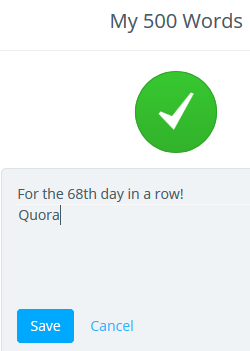 You can add a note to each of your check-ins to provide more data and leave a track in time. For example, if you do pushups every day, you can add the number of pushups to each entry, and you will journal the road of progress that way.
You can add a note to each of your check-ins to provide more data and leave a track in time. For example, if you do pushups every day, you can add the number of pushups to each entry, and you will journal the road of progress that way.
You can also set your goal as private so only you will see your entries, or public so every Coach.me user could see it; this is a good accountability trick.
Journaling
I had a multitude of journals, and some of them serve only as a tracker.
For example, I keep a writing log where I note down the length, time, type and speed of my writing. I’ve kept it since September 2013. The main goal of this tool is to make sure I write at least 1,000 words a day, but I got all kinds of interesting data points from it, like the fact that my average writing speed increased by 83%.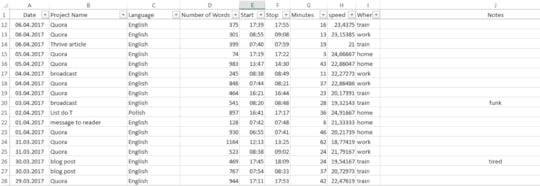
I have an online progress journal in which I document most (I try to include all, but I’m only human) of my business activities. I use it also to track my sleep and fitness records.
Regulate Your Tool
Your tracking and journaling tools should be according to their goals. In my online journal, I only jot down how long I slept each day.
This daily tracking obligation makes me aware of my sleep habits. I always check the time when I go to sleep and when I wake up, even if it’s only a 5-minute nap.
[image error]
Had I wanted to use this data for other purposes, for example, to calculate exact monthly averages, length of sleep hours and naps, I would have used a different tool, most probably a Google or Excel sheet.
Reporting
I also track all my expenses and income. Thanks to this activity, I am able to publish monthly income reports, which are kind of a tracking tool too.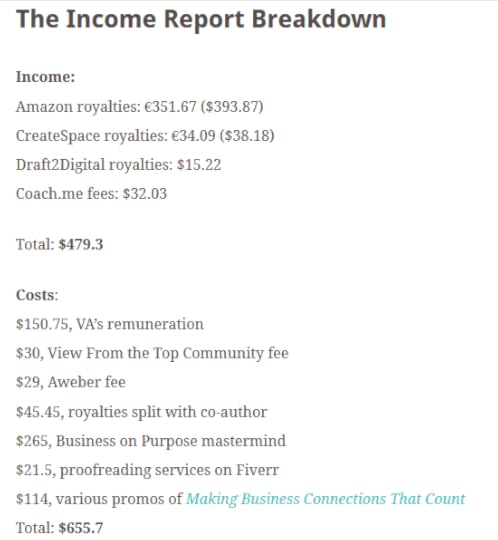
When you are focused on a daily workload like I am, it’s easy to miss a bigger picture. The act of writing an income report from a year ago helps me to distance from a daily grind and measure my progress from some perspective.
The same goes with my yearly goals and annual progress reports. While creating or reflecting on those reports, I use all of my journals to get a holistic view of my personal progress.
The fact that I beat dozens of fitness records does not automatically mean that I am a success. I might have progressed in the fitness area, but have I progressed as a man in my whole life? My annual reports provide me with such insights.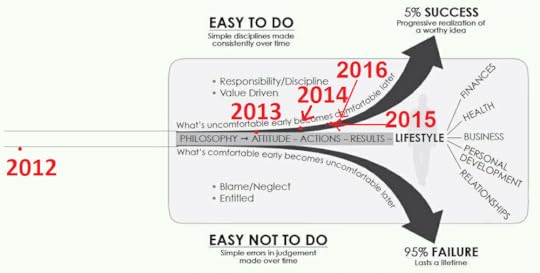
The Slight Edge report 2016
I make all these reports public, because transparency is one of my most treasured values. Everybody is different and has different goals, so your tools and methods SHOULD be different than mine.
Review Periodically
No matter what you want to measure and what method you will choose for that, create and keep it in a way that your notes are easy to review.
There is little sense in creating a vlog, if you never watch your own videos. Yes, the act of tracking itself magnifies your attention and focus on a given area of progress. However, actually referring to your notes and dwelling on facts and numbers make it much more effective.
This is one additional reason I make all those reports—they give me an excuse to go through my past entries.




